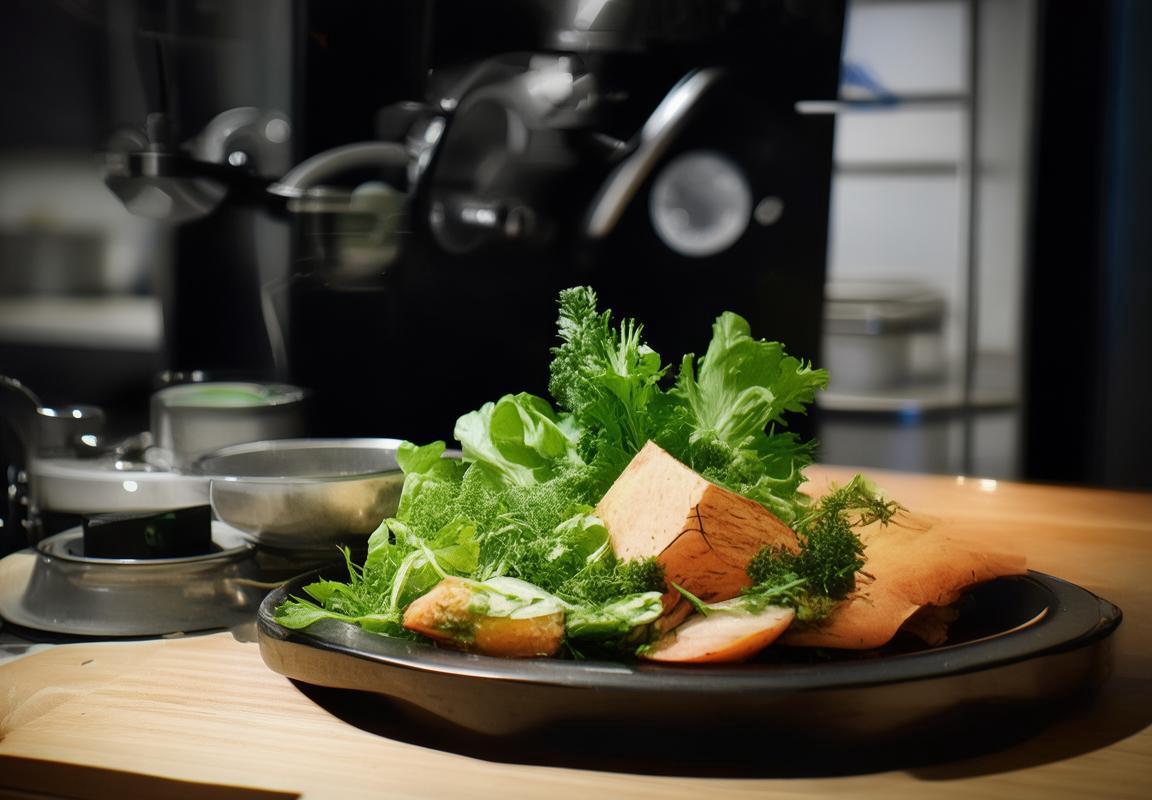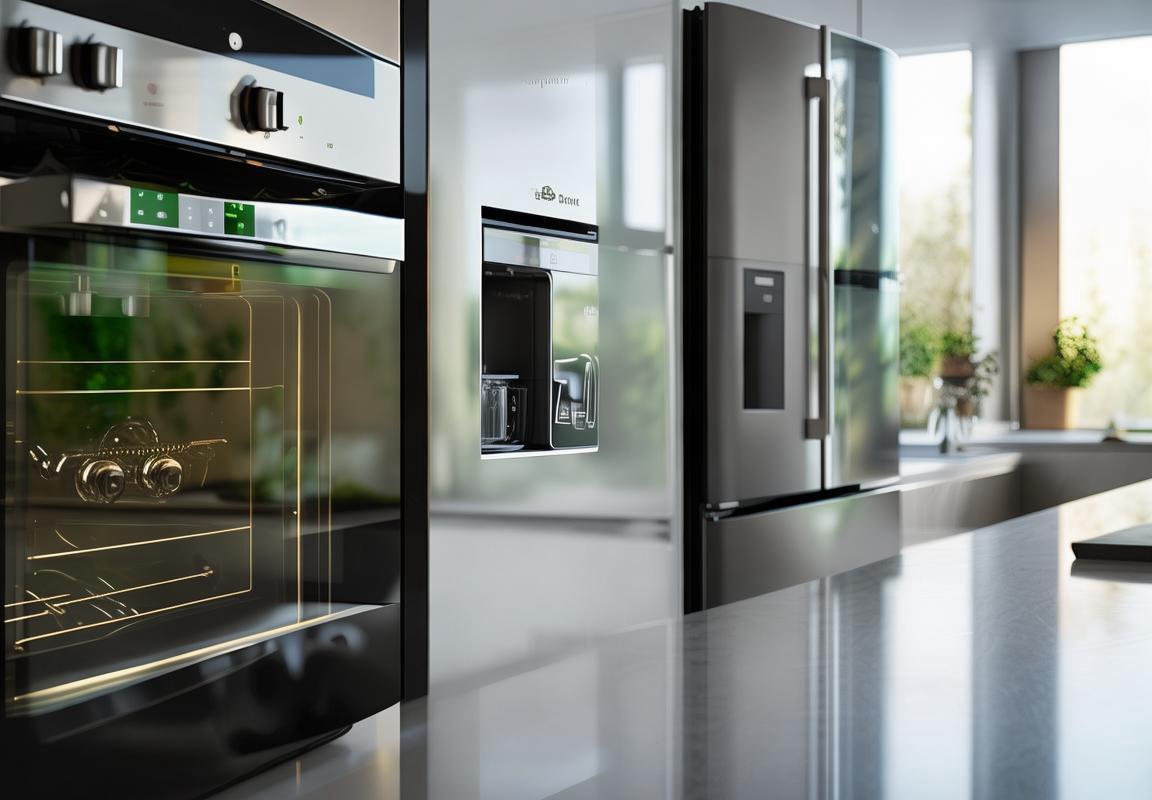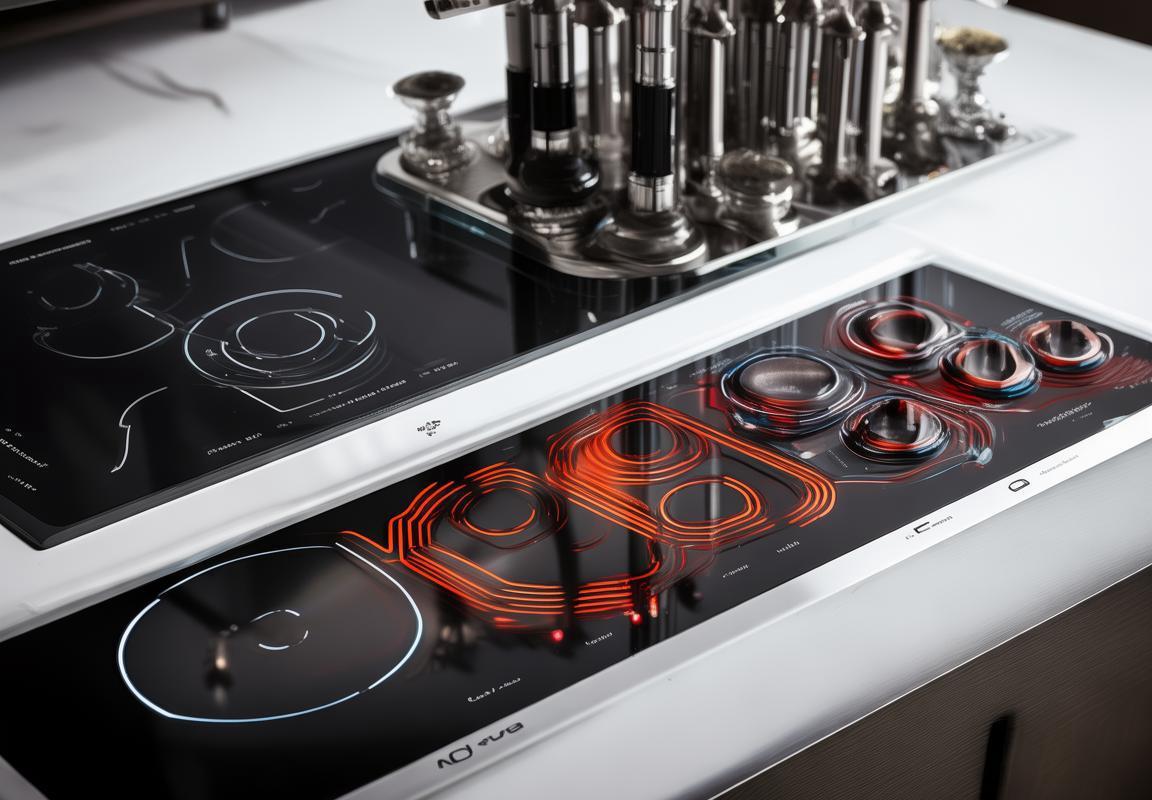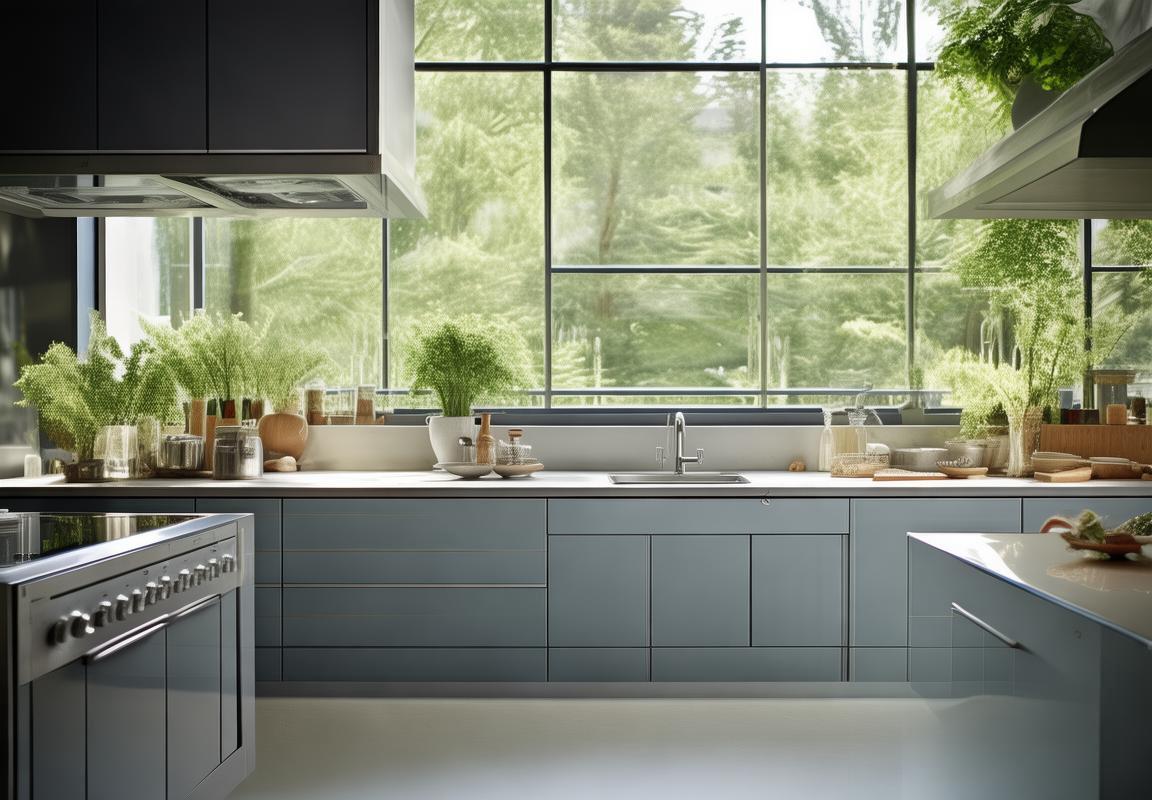As we delve into the evolving landscape of the kitchen appliance industry, one cannot overlook the significant influence of the RoHS (Restriction of Hazardous Substances) directive. This regulatory framework has reshaped the way manufacturers approach product design and innovation, particularly in the realm of heating elements. In this context, understanding the implications of RoHS compliance is crucial for both consumers and industry players alike. It’s a journey that intertwines environmental responsibility with consumer preference, driving a shift towards sustainable and safer kitchen appliances.
Understanding the RoHS Compliant Heating Element: What It Means for the Kitchen Appliance Market
The RoHS compliant heating element is a game-changer in the kitchen appliance market, and understanding what it entails is crucial for both manufacturers and consumers. RoHS, which stands for the Restriction of Hazardous Substances, is a directive that aims to restrict certain harmful materials from being used in the manufacturing of electrical and electronic equipment. In this context, a RoHS compliant heating element refers to a component that meets the strict standards set by the directive, ensuring that it does not contain restricted substances like lead, mercury, cadmium, hexavalent chromium, polybrominated biphenyls, or polybrominated diphenyl ethers.
For kitchen appliance manufacturers, the shift towards RoHS compliance has been a significant challenge but also an opportunity for innovation. These heating elements are designed to be environmentally friendly, which resonates with today’s eco-conscious consumers. Let’s delve into the specifics of what a RoHS compliant heating element is and how it impacts the kitchen appliance market.
Firstly, the core of a RoHS compliant heating element lies in its material composition. These elements are crafted without the use of the aforementioned hazardous substances, which are known to be harmful to human health and the environment. This not only reduces the risk of exposure during the product’s lifecycle but also ensures that at the end of its useful life, the heating element can be recycled or disposed of in an environmentally responsible manner.
Secondly, the design of RoHS compliant heating elements has to be meticulously planned to avoid the inclusion of restricted materials. This means that manufacturers must use alternative materials that can still provide the necessary heat output and durability while adhering to the RoHS directive. The development of such materials has spurred innovation in the industry, leading to more efficient and longer-lasting heating elements.
Consumers, on the other hand, benefit from the RoHS compliant heating element in several ways. For starters, the absence of harmful substances in these elements means that they are safer to use in the home, especially in environments where children are present. Additionally, the emphasis on environmental friendliness often translates into energy efficiency, which can lead to lower utility bills and a smaller carbon footprint.
The impact of RoHS compliant heating elements on the kitchen appliance market is multifaceted. On one hand, it has forced manufacturers to reevaluate their supply chains and invest in new technologies to produce these elements. This has, in turn, led to an increase in research and development efforts, resulting in more advanced and sustainable kitchen appliances.
On the other hand, the market has seen a surge in the demand for RoHS compliant appliances. Consumers are increasingly aware of the environmental impact of their purchases and are more likely to choose products that align with their values. This trend has been particularly pronounced in Europe and the United States, where environmental regulations are stringent and consumer awareness is high.
In the European market, for instance, the RoHS directive has been in place since 2006, and it has had a profound effect on the design and production of kitchen appliances. The compliance with RoHS has become a benchmark for quality and sustainability, and manufacturers that fail to meet these standards may find it difficult to compete in the market.
Similarly, in the American market, the RoHS directive has influenced the way kitchen appliances are produced and sold. While the United States does not have a direct equivalent to RoHS, many manufacturers have chosen to comply with the European standards to cater to the global market and to appeal to environmentally conscious consumers.
The adoption of RoHS compliant heating elements has also led to a ripple effect in the broader kitchen appliance industry. As manufacturers focus on creating sustainable and eco-friendly products, they are also exploring other aspects of their appliances, such as energy efficiency and recyclability. This holistic approach to product design is reshaping the kitchen appliance market, making it more innovative and customer-centric.
In conclusion, the RoHS compliant heating element is more than just a regulatory requirement; it is a symbol of the evolving kitchen appliance market. It represents a commitment to safety, sustainability, and innovation, and it is driving the industry towards a future where consumers can enjoy the latest technological advancements without compromising the health of the planet. As the market continues to evolve, it is clear that the RoHS compliant heating element will play a pivotal role in shaping the landscape of kitchen appliances for years to come.

The Importance of RoHS Compliance in the European and American Kitchen Appliance Industries
The RoHS Directive, or the Restriction of Hazardous Substances, is a cornerstone regulation in the European Union and the United States that has significantly impacted the kitchen appliance market. Its importance cannot be overstated, as it dictates the types of materials and substances that can be used in the manufacturing process of these devices. Here’s a deeper look into why RoHS compliance is so crucial in the European and American kitchen appliance industries.
The RoHS Directive was introduced to protect human health and the environment by eliminating the use of certain hazardous substances in electrical and electronic equipment. In the kitchen appliance sector, this means that manufacturers must ensure that their products do not contain lead, mercury, cadmium, hexavalent chromium, polybrominated biphenyls (PBBs), or polybrominated diphenyl ethers (PBDEs). This standard has become a global benchmark for safety and environmental responsibility.
In Europe, the RoHS Directive has been a game-changer for the kitchen appliance market. It has forced manufacturers to reassess their supply chains and production methods, leading to a shift towards more sustainable and eco-friendly practices. Consumers have become increasingly aware of the environmental impact of their purchases, and the demand for RoHS-compliant appliances has surged. This has, in turn, driven innovation and competition among manufacturers to produce cleaner, more efficient kitchen appliances.
Similarly, in the United States, the RoHS standards have influenced the kitchen appliance industry. While the U.S. does not have a direct equivalent to the RoHS Directive, many American manufacturers choose to comply with its requirements to cater to the European market and to demonstrate their commitment to global environmental standards. This has led to a rise in the quality and safety of kitchen appliances produced in the U.S., as well as a growing trend towards energy efficiency and reduced environmental footprint.
One of the key benefits of RoHS compliance is the reduction in the presence of harmful substances in kitchen appliances. For example, the elimination of lead and cadmium helps prevent the leaching of toxic substances into food, which is a significant concern for consumers. This not only ensures the safety of the end-user but also aligns with the broader global movement towards safer consumer products.
Moreover, RoHS compliance has spurred the development of alternative materials and technologies. Manufacturers have had to innovate to find substitutes for restricted substances, leading to the creation of more durable and efficient heating elements, for instance. This has not only improved the performance of kitchen appliances but has also extended their lifespan, reducing waste and the need for frequent replacements.
The environmental impact of kitchen appliances is another critical aspect where RoHS compliance plays a pivotal role. By restricting the use of hazardous substances, the directive helps to minimize the pollution that can occur during the manufacturing process and the disposal of the appliances at the end of their life cycle. This has encouraged the industry to focus on recycling and the use of renewable resources, contributing to a more circular economy.
In terms of market dynamics, RoHS compliance has created a level playing field for manufacturers. Those who fail to meet the standards risk being excluded from certain markets, particularly in Europe, where consumer demand for environmentally friendly products is high. This has led to increased competition and has forced companies to invest in research and development to stay ahead of the curve.
Furthermore, the RoHS Directive has had a cascading effect on the broader electronics industry. As kitchen appliances are a subset of this industry, the requirements set forth by RoHS have influenced the design and production of other electronic devices, ensuring that the entire sector adheres to stringent safety and environmental standards.
In conclusion, the importance of RoHS compliance in the European and American kitchen appliance industries cannot be overstated. It has not only improved the safety and environmental performance of kitchen appliances but has also driven innovation and sustainability. As the world continues to prioritize environmental responsibility, the influence of RoHS on the kitchen appliance market is likely to grow, shaping the future of this industry in ways that benefit consumers, manufacturers, and the planet alike.

How RoHS Affects Consumer Choices and Product Design
The RoHS directive, standing for the Restriction of Hazardous Substances, has become a cornerstone in the European and American kitchen appliance industries. Its impact on consumer choices and product design is profound, shaping how manufacturers approach innovation and consumer satisfaction.
Consumers are increasingly aware of the environmental implications of the products they purchase. RoHS-compliant heating elements ensure that kitchen appliances are free from hazardous materials like lead, mercury, cadmium, hexavalent chromium, and polybrominated biphenyls. This awareness leads consumers to prefer products that are not only functional but also environmentally responsible. As a result, appliances with RoHS-compliant heating elements often gain a competitive edge in the market.
Product design has also been significantly influenced by RoHS compliance. Manufacturers must now prioritize materials that are free from restricted substances while maintaining the performance and longevity of the heating elements. This shift has led to the development of alternative materials that are both safe and effective. For example, the use of glass and ceramic materials has increased as they are inherently free from RoHS-restricted substances.
The design of heating elements has evolved to incorporate these new materials. Engineers have had to rethink the construction of these components, often leading to sleeker, more efficient designs that are also safer for the environment. This focus on sustainable materials and designs has not only helped companies meet regulatory standards but has also inspired new innovations in kitchen appliance technology.
Consumer choice is further influenced by the presence of RoHS compliance labels. These labels serve as a clear indicator to consumers that the product has been designed with environmental considerations in mind. This can be a deciding factor for eco-conscious shoppers who are looking for appliances that align with their values.
Additionally, the RoHS directive has spurred the creation of recycling programs and end-of-life disposal guidelines for kitchen appliances. These initiatives ensure that consumers have options for properly disposing of their appliances at the end of their useful life, reducing the environmental footprint of these products over their entire lifecycle.
The demand for energy efficiency has also been heightened by RoHS compliance. As manufacturers seek to reduce the presence of hazardous substances, they are often encouraged to optimize the energy use of their products. This has led to a surge in the adoption of smart heating elements that not only save energy but also reduce greenhouse gas emissions, further appealing to environmentally conscious consumers.
Furthermore, the RoHS directive has pushed manufacturers to adopt more sustainable supply chains. This means sourcing materials that are not only RoHS-compliant but also ethically produced. Consumers are more likely to support brands that demonstrate a commitment to sustainability, which can have a direct impact on market share and brand loyalty.
In the realm of product design, RoHS has also influenced the lifecycle of appliances. Designers are now considering how a product will be disassembled and recycled at the end of its life, ensuring that the materials used can be easily separated and reused. This not only aids in compliance but also helps manufacturers reduce costs associated with waste management.
The rise of smart kitchen appliances has also been influenced by RoHS. As manufacturers focus on reducing hazardous substances, they are simultaneously looking to enhance the connectivity and intelligence of their products. This often results in appliances that offer more features, such as remote control and monitoring, which not only improve user experience but also contribute to the overall sustainability of the product.
Lastly, the RoHS directive has encouraged a culture of continuous improvement within the kitchen appliance industry. Companies are constantly searching for new ways to innovate while adhering to environmental regulations. This has led to a competitive landscape where innovation is driven by a dual mandate: to create products that are both efficient and safe for the environment.
In summary, the RoHS directive has had a transformative effect on consumer choices and product design in the kitchen appliance market. It has prompted a shift towards sustainable materials, energy-efficient technology, and environmentally friendly practices, ultimately leading to a market that is more aligned with consumer values and the health of the planet.

The Impact of RoHS on Innovation and Product Development in Kitchen Appliances
In the ever-evolving landscape of kitchen appliance technology, the RoHS (Restriction of Hazardous Substances) directive has emerged as a pivotal factor influencing innovation and product development. This European Union regulation, designed to limit the use of certain hazardous materials in electrical and electronic equipment, has had a profound impact on how manufacturers approach their designs and what consumers expect from their appliances.
The RoHS directive mandates the removal of lead, mercury, cadmium, hexavalent chromium, polybrominated biphenyls, and polybrominated diphenyl ethers from the components of electrical and electronic goods. For kitchen appliance manufacturers, this has led to a shift in the materials and technologies they employ.
-
Innovation in Alternative MaterialsManufacturers have had to innovate to find alternatives to the restricted substances. For example, lead-free solders have become standard in the industry, and the search for non-toxic alternatives to flame retardants has spurred the development of new materials. This push for innovation has not only driven the creation of safer appliances but has also opened up new markets for materials science and engineering.
-
Design Changes for CompatibilityThe constraints imposed by RoHS have necessitated design changes to ensure compliance. Appliances now often feature more modular designs, allowing for easier component replacement and disposal. This shift has encouraged the creation of appliances that are more durable and repairable, which in turn has a positive impact on the environment and the consumer’s wallet.
-
Energy Efficiency and Performance OptimizationIn the quest to comply with RoHS, many manufacturers have inadvertently stumbled upon improvements in energy efficiency and performance. As they replaced certain materials with more advanced ones, they’ve discovered that the new components can actually enhance the efficiency and lifespan of appliances. This has led to a new wave of products that are not only compliant but also more sustainable.
-
Customization and PersonalizationRoHS has spurred a trend towards customization and personalization in kitchen appliances. As manufacturers focus on removing restricted substances, they’re also looking to offer more tailored solutions to consumers. This could mean appliances that are more adaptable to different household needs or that are designed with specific regions’ energy sources and regulations in mind.
-
Sustainability and Lifecycle ThinkingThe RoHS directive has highlighted the importance of sustainability in product development. Companies are now thinking about the entire lifecycle of their products, from design to disposal. This lifecycle approach has led to the creation of appliances that are easier to recycle and that use materials that are more readily available and less harmful to the environment.
-
Consumer Trust and Brand ReputationFor consumers, the RoHS compliance of kitchen appliances means greater peace of mind. Knowing that the products they purchase do not contain harmful substances can build trust and enhance brand reputation. Manufacturers that can demonstrate their commitment to environmental safety are more likely to attract environmentally conscious consumers.
-
Global Market ExpansionRoHS compliance is not just a European concern; it’s a global one. As more countries adopt similar regulations, manufacturers must ensure that their products meet these standards to enter new markets. This has led to a standardized approach to product development that can be applied across the globe.
-
Technological AdvancementsThe need to comply with RoHS has driven technological advancements. For instance, the development of new sensors and control systems that reduce energy consumption without compromising on functionality. These advancements not only help appliances meet the RoHS requirements but also contribute to the overall improvement of kitchen appliance technology.
In conclusion, the impact of RoHS on innovation and product development in the kitchen appliance industry has been multifaceted. It has forced manufacturers to reevaluate their materials and designs, leading to more sustainable and efficient appliances. While the initial challenge of compliance was daunting, the long-term benefits for both the environment and consumers are clear.

Case Studies: Successful RoHS-Compliant Heating Elements in the European and American Markets
In the European and American markets, the RoHS (Restriction of Hazardous Substances) directive has significantly influenced the design and production of heating elements for kitchen appliances. Let’s explore a few case studies that showcase successful RoHS-compliant heating elements:
-
Nordic appliances: Embracing Environmental StandardsDanish manufacturer Miele has long been a proponent of sustainable design, and their heating elements are a testament to this commitment. Miele’s induction cooktops, for instance, use RoHS-compliant heating elements that are not only efficient but also environmentally friendly. The company has managed to integrate RoHS standards seamlessly into their product development process, ensuring that their appliances are not only compliant but also innovative.
-
German engineering: Efficiency meets complianceGerman brand Siemens has also excelled in creating RoHS-compliant heating elements that stand out for their efficiency. Their microwave ovens, for example, feature heating elements that adhere to RoHS regulations while delivering superior cooking performance. Siemens’ focus on engineering solutions that reduce waste and environmental impact has made their heating elements a favorite among eco-conscious consumers.
-
American innovation: Adapting to Global RegulationsIn the United States, companies like KitchenAid have had to adapt to international regulations like RoHS. Their induction cooktops and range ovens now feature heating elements that meet RoHS standards, ensuring that they can be sold both domestically and internationally. This adaptation has allowed KitchenAid to expand its market reach and cater to a broader customer base that values compliance with global environmental standards.
-
Incorporating Advanced MaterialsTo meet RoHS requirements, manufacturers have had to explore new materials and technologies. Case in point, the use of glass-ceramic surfaces in cooktops, which are free from certain hazardous substances like lead and cadmium, has become more prevalent. Companies like Bosch have successfully integrated these materials into their heating elements, offering a sleek, durable, and RoHS-compliant alternative to traditional materials.
-
Energy Efficiency and PerformanceRoHS-compliant heating elements are not just about adherence to regulations; they also bring about significant improvements in energy efficiency and performance. For example, Induction Technologies, a U.S.-based company, has developed heating elements that use RoHS-compliant materials to create cooktops that are faster and more responsive. This innovation has not only helped meet environmental standards but also enhanced the user experience.
-
Consumer Trust and Market AppealThe adoption of RoHS-compliant heating elements has also bolstered consumer trust. Customers are increasingly looking for products that align with their environmental values, and the presence of a RoHS-compliant label can be a strong selling point. Brands that prioritize compliance with these standards often find themselves with a competitive edge in the market.
-
Longevity and MaintenanceRoHS-compliant heating elements also contribute to the longevity of kitchen appliances. By using non-hazardous materials, these elements are less prone to degradation over time, resulting in appliances that require less maintenance and last longer. This aspect is particularly appealing to consumers who seek products that offer long-term value.
-
Global Market AccessFinally, the success of RoHS-compliant heating elements lies in their ability to facilitate global market access. As more countries adopt similar environmental regulations, manufacturers that can produce compliant products are better positioned to enter new markets. This is especially true for companies like GE Appliances, which has expanded its international presence by ensuring its heating elements are RoHS compliant.
In conclusion, the case studies of successful RoHS-compliant heating elements in the European and American markets demonstrate how manufacturers have navigated the challenges of environmental compliance while also driving innovation and product development. By focusing on sustainable materials, energy efficiency, and consumer appeal, these companies have shown that meeting regulatory standards can be a gateway to both ecological responsibility and commercial success.

Challenges and Solutions for Manufacturers in Adapting to RoHS Standards
Adapting to the RoHS (Restriction of Hazardous Substances) directive can be a daunting task for manufacturers in the kitchen appliance industry. The strict regulations imposed by RoHS require companies to eliminate certain hazardous substances from their products, which can significantly impact product design, supply chain management, and overall business strategy. Here are some of the challenges and solutions faced by manufacturers in meeting these standards.
Manufacturers often encounter challenges related to the identification and replacement of hazardous substances. The directive bans the use of lead, cadmium, mercury, hexavalent chromium, polybrominated biphenyls (PBBs), and polybrominated diphenyl ethers (PBDEs) in electrical and electronic equipment. This can be particularly difficult in heating elements, which are critical components in many kitchen appliances.
Identifying Hazardous Substances
One of the primary challenges is pinpointing where these hazardous substances are used within the product. For example, in a microwave oven’s heating element, lead may be used in solders to improve thermal conductivity. To comply with RoHS, manufacturers must either find alternatives or modify the production process to eliminate lead.
Solutions: Collaborating with Suppliers and Technical Experts
To address this challenge, manufacturers often collaborate closely with suppliers and technical experts. Suppliers can provide insights into alternative materials that meet RoHS standards while maintaining or improving product performance. Technical experts can offer guidance on the best practices for material substitution and process modifications.
Designing for Compliance
Another challenge is redesigning products to meet RoHS standards without compromising on functionality or aesthetics. This requires a thorough understanding of the product’s requirements and the properties of the materials being used.
Solutions: Material Research and Development
To overcome this, manufacturers invest in research and development to identify new materials that are RoHS compliant. This may involve testing various alloys and coatings to find the right balance between compliance and performance. Innovation in material science is key to finding suitable alternatives.
Supply Chain Management
Ensuring that the entire supply chain adheres to RoHS standards is a significant challenge. Manufacturers must verify that all components and materials used in their products are RoHS compliant, which can be complex when dealing with a global supply chain.
Solutions: Supply Chain Audits and Certification
Regular audits of the supply chain can help identify non-compliant components early in the production process. Many suppliers offer RoHS certification, which can serve as a reliable indicator of compliance. Implementing a robust quality control system is essential to maintain compliance throughout the supply chain.
Cost Implications
The transition to RoHS-compliant products can lead to increased costs due to the use of alternative materials and the need for additional testing and certification. These costs can be passed on to consumers, potentially affecting market competitiveness.
Solutions: Cost Optimization and Strategic Pricing
Manufacturers may need to optimize their production processes to reduce costs while maintaining compliance. This could involve bulk purchasing of alternative materials or streamlining production lines. Strategic pricing may also be necessary to ensure that the increased costs do not alienate price-sensitive consumers.
Consumer Perception
Consumers are increasingly aware of environmental and health concerns, and they are likely to prefer products that are RoHS compliant. However, there is a challenge in communicating the benefits of RoHS compliance to consumers effectively.
Solutions: Marketing and Education
Effective marketing strategies can help educate consumers about the benefits of RoHS-compliant products. This can include highlighting the environmental impact of hazardous substances and the safety benefits of using RoHS-compliant materials.
Regulatory Compliance and Continuous Improvement
Maintaining compliance with RoHS standards requires a continuous effort. Manufacturers must stay informed about any changes to the directive and adapt their products and processes accordingly.
Solutions: Ongoing Training and Regulatory Monitoring
Regular training for employees on RoHS compliance and ongoing monitoring of regulatory changes are essential. This ensures that the entire organization remains up-to-date with the latest requirements and can respond quickly to any changes.
In conclusion, while the RoHS directive presents significant challenges for manufacturers in the kitchen appliance industry, it also offers opportunities for innovation and differentiation. By addressing the challenges with strategic solutions, manufacturers can not only comply with the directive but also improve their products and position themselves as leaders in sustainable and responsible manufacturing.

Consumer Benefits and Market Trends in RoHS-Compliant Kitchen Appliances
In the realm of kitchen appliances, the RoHS (Restriction of Hazardous Substances) directive has become a pivotal factor shaping consumer choices and market trends. This EU regulation, which restricts the use of certain hazardous materials in electrical and electronic equipment, has had a significant impact on how products are designed and the benefits they offer to consumers.
Consumers are increasingly aware of the environmental impact of their purchases. RoHS-compliant kitchen appliances are perceived as more eco-friendly, leading to a growing preference for such products. This shift is not just driven by ethical considerations but also by the practical benefits that come with using appliances that adhere to these standards.
One of the key consumer benefits is the reduction of harmful substances in appliances. By limiting the use of lead, cadmium, mercury, hexavalent chromium, polybrominated biphenyls (PBBs), and polybrominated diphenyl ethers (PBDEs), RoHS-compliant appliances contribute to a healthier indoor environment. This is particularly important in kitchen settings where exposure to such substances can be more frequent.
Another significant benefit is the longevity of the appliances themselves. Materials that are not subject to RoHS regulations may degrade over time, leading to a shorter lifespan for the appliance. RoHS-compliant appliances, on the other hand, are designed with more durable components, ensuring that they remain functional for longer periods.
Market trends are also being influenced by the demand for RoHS-compliant kitchen appliances. As consumers become more environmentally conscious, manufacturers are responding by offering a wider range of products that meet these standards. This has led to a surge in the popularity of appliances like induction cooktops, which are inherently RoHS-compliant and offer energy efficiency and safety.
Moreover, the market is seeing a trend towards modular and customizable kitchen appliances. Consumers are looking for products that can be easily upgraded or replaced with parts that are RoHS-compliant. This not only extends the life of the appliance but also allows for the integration of new technologies without the need for a complete replacement.
The rise of smart kitchen appliances has been another significant trend. These devices often incorporate RoHS-compliant components to ensure they are not only technologically advanced but also safe and environmentally responsible. Smart appliances that can be controlled remotely or through voice commands are becoming increasingly popular, and their RoHS compliance is a testament to the industry’s commitment to sustainable practices.
In terms of design, RoHS-compliant kitchen appliances are often seen as sleeker and more modern. The use of non-toxic materials and the elimination of hazardous substances can lead to innovative designs that are both aesthetically pleasing and functional. This aesthetic appeal is a strong draw for consumers who are looking for appliances that not only serve their practical needs but also enhance the look of their kitchen.
The environmental benefits of RoHS-compliant appliances are not just a selling point; they are also a reflection of the broader market trends. As more consumers demand sustainable products, manufacturers are responding by reducing their carbon footprint and adopting greener production processes. This trend is likely to continue, with an increasing number of kitchen appliances being designed with RoHS compliance in mind.
The market for RoHS-compliant kitchen appliances is also being influenced by regulatory changes. In the United States, while RoHS is not a federal law, many states have their own regulations that mirror the EU directive. This means that manufacturers must navigate a complex web of regulations, which can lead to a standardized approach that benefits consumers across the globe.
In conclusion, the consumer benefits and market trends in RoHS-compliant kitchen appliances are multifaceted. They range from health and environmental advantages to the practicality of long-lasting products and the aesthetic appeal of modern designs. As the market continues to evolve, it’s clear that RoHS compliance is not just a regulatory requirement but a key factor in shaping the future of kitchen appliances.

Future Predictions: The Role of RoHS-Compliant Heating Elements in the Global Kitchen Appliance Industry
The integration of RoHS-compliant heating elements into the global kitchen appliance industry is reshaping the landscape with a focus on environmental responsibility and technological advancement. As we delve into the future, several key trends and benefits are becoming increasingly evident.
In the pursuit of sustainability, manufacturers are turning to RoHS-compliant heating elements to ensure their products meet stringent environmental regulations. This shift is not just about compliance; it’s about fostering innovation that prioritizes the health of both consumers and the planet. The adoption of these elements is set to bring about a series of market trends and consumer benefits.
One significant trend is the rise in demand for energy-efficient kitchen appliances. With RoHS-compliant heating elements, manufacturers can offer products that not only adhere to environmental standards but also provide substantial energy savings. This efficiency is a direct appeal to environmentally conscious consumers who are looking to reduce their carbon footprint.
Consumers are also benefiting from improved safety features that come with RoHS compliance. The restriction on certain hazardous substances ensures that kitchen appliances are less likely to pose health risks. For example, the elimination of lead and cadmium in heating elements means that there is a reduced risk of exposure to toxic elements during use or disposal.
The market is witnessing a trend towards modular and customizable kitchen appliances. RoHS-compliant heating elements, with their focus on flexibility and compatibility, are enabling manufacturers to create appliances that can be easily upgraded or adapted to meet individual preferences. This modular approach not only enhances consumer satisfaction but also allows for a more dynamic and responsive product line.
Another trend is the integration of smart technology. RoHS-compliant heating elements are often paired with smart controls that offer precise temperature regulation and energy management. These features not only enhance the user experience but also contribute to further energy savings and a more sustainable kitchen environment.
The global kitchen appliance industry is seeing a surge in eco-friendly design. RoHS compliance encourages the use of materials that are not only safe but also recyclable. This focus on eco-friendly design is not just a marketing strategy; it’s a reflection of the industry’s commitment to a greener future.
In terms of product development, the role of RoHS-compliant heating elements is expanding the scope of innovation. Manufacturers are exploring alternative materials and technologies that not only meet the RoHS standards but also push the boundaries of what is possible in kitchen appliance design. This exploration is leading to new, more efficient, and environmentally friendly heating solutions.
Looking ahead, the future of RoHS-compliant heating elements in the kitchen appliance industry is bright. As consumer awareness of environmental issues grows, so does the expectation for sustainable products. This demand is driving the industry to invest in research and development, leading to a steady stream of new products that are both efficient and eco-friendly.
Moreover, regulatory changes and international agreements are likely to further embed RoHS compliance into the global marketplace. This means that the industry will need to continually adapt and innovate to stay ahead of these changes, ensuring that they can continue to meet the evolving needs of consumers and the planet.
In conclusion, the role of RoHS-compliant heating elements in the global kitchen appliance industry is multifaceted. They are not just a regulatory requirement but a catalyst for innovation, a driver of market trends, and a cornerstone of consumer benefits. As the industry continues to evolve, the future of these heating elements promises to be one of sustainability, efficiency, and technological advancement.